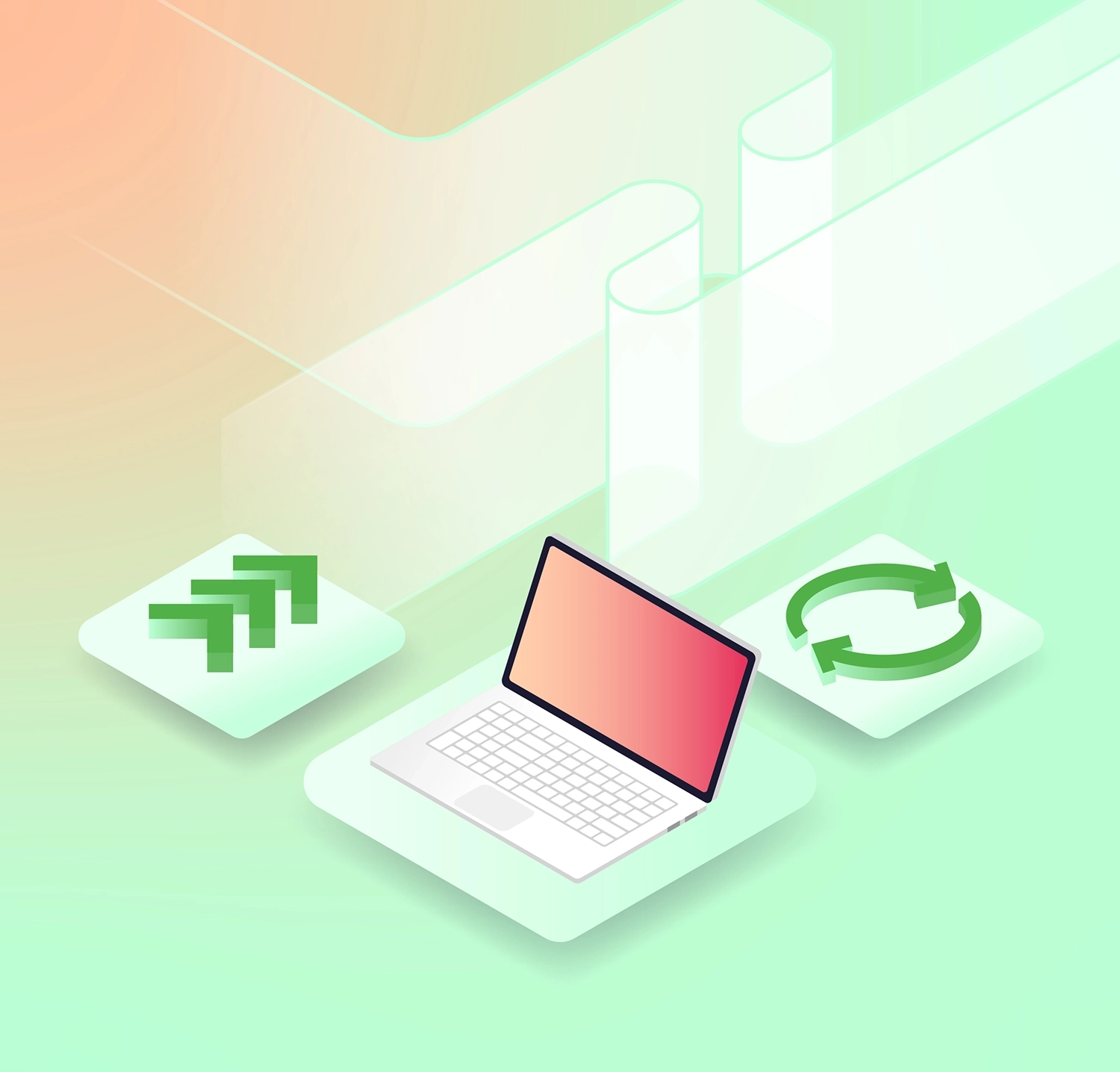In this article, we compare Kubernetes costs across the three biggest managed Kubernetes platforms:
- AKS (Azure Kubernetes Service)
- EKS (Amazon Elastic Kubernetes Service)
- GKE (Google Kubernetes Engine)
Cost factors of Kubernetes
Most of the cost derives from the underlying infrastructure and how you deploy Kubernetes. Typically, costs come from:
- Compute
- Storage
- Networking
- Database
- Monitoring and logging
- Backup and disaster recovery
- AI and data analytics
- Licensing and support
Compute
Just as with most cloud services, the largest part of your Kubernetes bill likely consists of compute. Here's what forms those costs
- Virtual Machines or Nodes: EC2 instances, or virtual machines (VMs) powering your clusters, can quickly rack up costs. Pricing depends on the instance type; general-purpose, memory-optimised, and high-performance options all come at different rates.
- Worker nodes: Each worker node adds costs based on the instance type and specifications you choose. Greater nodes with more CPU and RAM cost more but can be more efficient if you're running heavy workloads. What you actually pay depends on how much CPU and memory your containerised apps demand. If requests are too high or poorly set, you're likely paying for resources you don’t use.
- Control plane: The control plane manages your Kubernetes cluster. This managed service is often charged at a low price per cluster. However, if you're running multiple clusters, costs can rise quickly.
- Pricing model: Prices also vary a lot depending on whether you use on-demand instances (pay-as-you-go), commit to reserved instances for longer use or leverage other discounts such as spot instances.
Storage
Storage is one of the big cost factors in Kubernetes. Data grows fast, from terabytes to petabytes, and fast SSD storage with high IOPS adds up quickly.
Here’s where the costs add up:
- Persistent storage: Services like AWS EBS continue to charge even when volumes aren’t in use. Orphaned volumes are common, so clean up regularly and right-size what you provision.
- Container image storage: Large or outdated images stored in container registries like (ECR, Artifact Registry, ACR) can pile up costs. Optimise image
- Backup and snapshots: While crucial for reliability, these can quickly add to your cloud bill.
Networking
Networking costs mainly come from moving data in and out of your cluster and between nodes. Key factors driving costs include:
- Data transfer: Traffic inside the cluster (especially across availability zones or regions) can incur charges.
- Ingress and egress traffic: Data entering or leaving the cluster to the internet or other cloud services often costs money.
- Load balancers: External load balancers used for exposing services add ongoing charges.
- Network storage access: Accessing storage over the network (e.g., block or file storage) can have data transfer fees.
- Private cluster endpoints: When using private clusters (e.g., AKS with private IP addresses), services like Container Registry, Key Vault, and Storage connect via private endpoints, which incur separate charges. As the number of services and clusters grows, the number of private endpoints increases too. While these charges are usually lower than compute or monitoring, they still add to your overall cost and are worth tracking.
Database
When you're running databases within or alongside your Kubernetes cluster, costs can quickly add up to be a big part of your Kubernetes spend so you need to track and optimise them. In detail:
- Managed database services: Using cloud-managed databases (like AWS RDS, Google Cloud SQL, or Azure Database) incurs ongoing fees based on instance size, storage, and usage.
- Self-managed databases on Kubernetes: Running databases inside containers means you're paying for every bit of compute, storage, and networking resources.
- Backup and replication: Regular backups, snapshots, and cross-region replication add to storage and network expenses.
Monitoring and logging
Monitoring is another major cost driver. Monitoring tools often charge based on the amount of data you ingest. Kubernetes environments generate a lot of logs and metrics (standard output, errors, container logs). If you push everything into your monitoring system, costs can increase rapidly.
Licensing and support
Although Kubernetes itself is free, additional licensing and support costs can add up, especially in enterprise environments.
- Commercial Kubernetes distributions: Some vendors offer paid Kubernetes platforms with extra features, security or management tools. These come with a price tag.
- Third-party software: Monitoring, logging, security or backup tools often require separate licenses or subscriptions.
- Support contracts: Enterprise support from cloud providers or vendors (e.g., Red Hat, VMware, or managed Kubernetes services) typically involves ongoing fees.
Managed Kubernetes pricing: AKS vs EKS vs GKE
Choosing between a managed Kubernetes provider is crucial to control your overall Kubernetes costs.
Here’s the different pricing for the following three cloud providers:
- Azure Kubernetes Service (AKS)
- Amazon Elastic Kubernetes Service (EKS)
- Google Kubernetes Engine (GKE)
Amazon Elastic Kubernetes Service (EKS) Pricing
1. Control Plane (Cluster Management) Costs
An EKS cluster comprises a master node, also referred to as the AWS EKS control plane. The cost is $0.10 per hour in (us-east-1 and us-east-2), although pricing varies by region. You’re charged by the minute, with a minimum of one hour if the cluster is running.
Assuming the cluster runs 24 hours a day for a month: $0.10/hour * 24 hours/day * 30 days = $72.
| EKS Control Plane |
Price |
| Control Plane Cost |
$0.10 per hour |
| Estimated Monthly Cost |
$72 per cluster |
2. Compute costs
EKS nodes run on Amazon EC2 instances, and costs vary based on instance type and quantity. Prices start at $0.0042 per hour for small instances like the T4G Nano and can go up to $360.9869 per hour for large compute-optimised ones.
For persistent storage, Amazon EBS (Elastic Block Storage) is charged at a rate of $0.10 per GB per month (General Purpose SSD). Additionally, you can save money in EKS by using either Savings Plans or Reserved Instances, which both give a discount of up to 72% if you commit to long-term usage.
| EKS Compute Resources |
Cost |
| EC2 Instances |
$0.0042 - $360.9869 per hour |
| EBS Storage |
$0.10 per GB monthly |
| Savings Plans/Reserved Instances |
72% Discount |
3. Networking costs
Amazon’s networking costs can add up, especially for data transfer. Like with most cloud providers, all data coming in is free. However, the same is not true for outbound data from AWS to the internet. Outbound transfers from your EKS cluster to the internet start at $0.09 per GB (first 10 TB per month). VPC (Virtual Private Cloud) costs vary depending on usage and setup.
| EKS Networking |
Cost |
| Data transfer out |
$0.09 per GB (first 10 TB per month) |
| VPC |
Depending on configuration |
Google Kubernetes Engine (GKE) Pricing
1. Cluster Management Costs
Just like Azure, Google Kubernetes Engine (GKE) also offers a free tier, suitable for small deployments. For regional or multi-zonal clusters, GKE charges $0.10 per hour per cluster, resulting in approximately $72 per month (if running all day all month), the same as EKS and AKS.
| GKE Cluster Management |
Cost |
| Zonal clusters |
Free |
| Clusters |
$0.10 per hour (approx $72/month) |
2. Compute Costs
GKE runs on Google Compute Engine (GCE) instances. Prices start from $0.0449 per hour for general-purpose machine types, such as c4a-standard-1 (1 vCPU, 4 GB RAM). For persistent Disks storage, you pay $0.04 per GB per month – standard provisioned space. This makes GKE the most affordable option.
For steady workloads, you can reduce compute costs by up to 57% using Committed Use Discounts.
| GKE Compute Resources |
Cost |
| GCE Instances |
$0.0449+ per hour |
| Persistent Disks |
$0.04 per GB per month |
| Committed Use Discounts |
Up to 57% discount |
3. Networking costs
Google Cloud Platform’s networking costs are similar to Amazon AWS and Microsoft Azure.
There is no charge for inbound data transfers, but data transfer out (egress) to Europe costs $0.085 per GiB per month for usage above 10,240 GiB. For North America it is slightly less; $0.08.
| Google GKE Networking |
Cost |
| Data transfer out |
$0.085 per GB (first 10 TB per month) |
| Inter-region traffic |
Discounted rates |
| Load Balancers |
$0.025 per hour for the first 5 rules
$0.008 per GB of data processed (regional tier) |
Azure Kubernetes Service (AKS) Pricing
1. Control plane (Cluster Management) Costs
In total, AKS has three pricing tiers:
- Free tier: Only pay for underlying resources
- Standard tier: $0.10 per cluster per hour
- Premium tier: $0.60 per cluster per hour
Unlike Google and Amazon, Microsoft Azure is the only cloud provider that offers a free control plane for its managed Kubernetes service, AKS.


